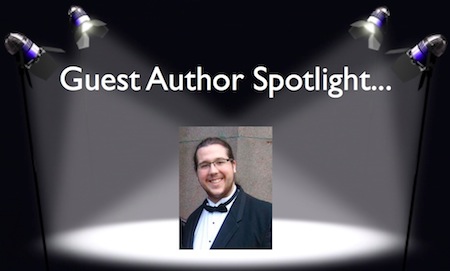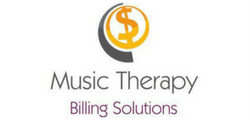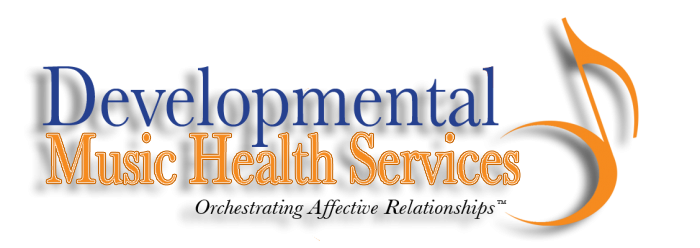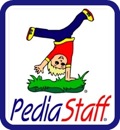The Background Story…
It was only a few weeks ago that I first heard the question on how music therapy works: is it music AS therapy? or music IN therapy?
A day later, I read a tweet from music therapy student Kyle Fleming that said “Heated discussion about music in v. as therapy. Pretty interesting blog topic for someone?”
It was too much. I couldn’t resist. I invited Kyle to share his thoughts on the topic, based on the “heated discussion” he had. Next week, tune in again as I weigh in on the topic. In addition, I invite you to share YOUR thoughts in the comments section–do you think music works AS therapy or IN therapy?
Kyle on Music IN Therapy vs. Music AS Therapy
In my Psych of Music class the other day, we got into a very heated discussion about the definition of music therapy; more specifically, as music therapists, do we use music IN therapy, or music AS therapy?
It’s interesting to me how a simple preposition change can completely change the perception of something, but in this case, the decision between “in” and “as” is a very distinct one. From my understanding of the terms, the answer to the debate of “in” versus “as” lies in how the music is being used to attain the therapeutic goals.
While researching for a counseling psychology paper, I found many articles that featured psychologists using music activities in their sessions. The goals that were being attained were being approached using a variety of techniques, with music being one of those techniques utilized. In this case, the music was being used IN therapy, as the main focus of the sessions weren’t to tailor the music to get specific results, but rather to use music as a means of rapport building to further work toward this client’s goals.
Conversely, when using music AS therapy, a music therapist is taking all aspects of the music into consideration in working toward a client’s goals. The music therapist takes timbre, rhythm, tempo, instrumentation, melody, and a host of other musical elements into consideration when deciding how to use music in a session. Each musical intervention needs to be justified and shown to benefit the client in some way. Something as subtle as what type of beat is being used (“four on the floor” dance beats compared to an “oom-pah-pah” waltz beat) can induce a physiological reaction that will either inhibit or assist a client in his or her therapeutic goals.
I sit in the camp of music therapists using music as therapy, because if we look at the works of Gaston and Unkefer & Thaut, there really isn’t an opportunity for music to be a passive part of our treatment. Unkefer & Thaut, in their taxonomy on mental health, talk about music being used in performance, as relaxation, and for recreation, among other things. Gaston discusses similar uses of music; for example, music can be used as a non-verbal form of communication, a non-threatening form of intimacy, and, in performance, can induce feelings of gratification and accomplishment, among other things.
In all of these definitions, the music is an integral part to the therapy. The client is actively participating in the music making, while the therapist is actively manipulating, shaping, teaching, and healing by considering the music how it is used. Music therapy is not passive. Using music in therapy is not therapeutic; using music as therapy is.
About the Author: Kyle Fleming is a senior music therapy major at Wartburg College in Waverly, IA. He was recently elected President of the American Music Therapy Association for Students (AMTAS). Follow him on Twitter at @kf_music or send him an email at k.john.fleming@gmail.com.



 orcid.org/0000-0001-8665-1493
orcid.org/0000-0001-8665-1493






{ 12 comments… read them below or add one }
I went to school with Kyle! I loved that course! I think this was a very interesting topic to discuss. Your insights are great! Thinking this type of question through helps MTs explain what we do to the general public. Advocacy is key.
Couldn’t agree with you more, Kelsey 🙂 ~Kimberly
Kyle is indeed a great guy and I’m excited to see what he chooses to do in our wonderful career! I was the president of the Wartburg Student Music Therapy Association when he was a first-year. I can’t say that I have influenced him that much, but I like to think I did! Haha.
Great thoughts on subtle wording and large differences in our field. I think we all need to do some thinking on this concept. If we know how to answer these questions, it makes are work that much more accessible to the general public.
Wartburg alums are blowing up this board!
I have to admit, when I first saw this topic, I thought of it from a very behavioral point of view (because that was our background at Wartburg 🙂 ). I think this is great because I think it can be harder in non-behavioral models to view the music active. Making sure that that is the focus of what we do is so important. Good article, Kyle!
Kyle, thank you for sharing this. When I’m giving the “elevator” speech to anyone about what music therapy is, I usually begin with “using music IN therapy and AS therapy to…” I love the distinction being made here and the I certainly see the need for such clarification as the line may appear to be a fine one; however, when dissected it is evident which becomes the obvious and correct preposition.
Although music AS therapy fits the definition of what we do better, it’s important to note that there exist several types of settings where the music can operate IN therapy in an equally potent way and that one is not superior to the other. It’s about what the patient needs; remember that we are MUSIC therapists but we are music THERAPISTS. For instance, in medical settings and psych settings, often a patient’s primary need is coping and often they need your therapeutic skills more than your musical skills. Of course we always work music into the session in some way, but sometimes clients really need your therapeutic ear more than the music itself. In this way often the music is functioning IN therapy as a rapport builder or a springboard for discussion. When we see other qualified therapists using music, we tend to say “HEY!” and perhaps perceive it as a threat?… and this brings up another interesting question: where does that leave us? Maybe it makes us nervous to think that another therapist can do what we do without our training– but that’s just the thing, they don’t have the musical training and can only use the music IN therapy, because without knowing the musical components that contribute to what’s happening, they can’t effectively use the music AS therapy. So I guess the point of what I’m saying is that using music IN vs AS therapy requires respectively different skills, skills that we have all developed through our training. We need to have the flexibility to utilize our skills one way or the other, considering first and foremost what our clients need and how they would be best served.
Shannon, Elissa, Carrie, Bryan…thank you for your interest and your insightful comments! I appreciate your continuing the conversation 🙂 ~Kimberly
Your post seems to be very awesome.I enjoyed it while reading.I’m glad that you simply shared this helpful info with us. Please keep us informed like this. Thank you for sharing.
I host a health show in a developing country and this is new for most of the population. This explanation is really good and clearly understood. Well done
Music does a lot of things for a lot of people.
I read full article and this is really awesome. So use music as therapy.
Thanks for your posting .
Keep posting like this is very helpful For us
I have found something new in this Article.
Great post. I was checking continuously this blog and
I am impressed! Very useful info.
Thanks and best of luck.
You must log in to post a comment.
{ 2 trackbacks }